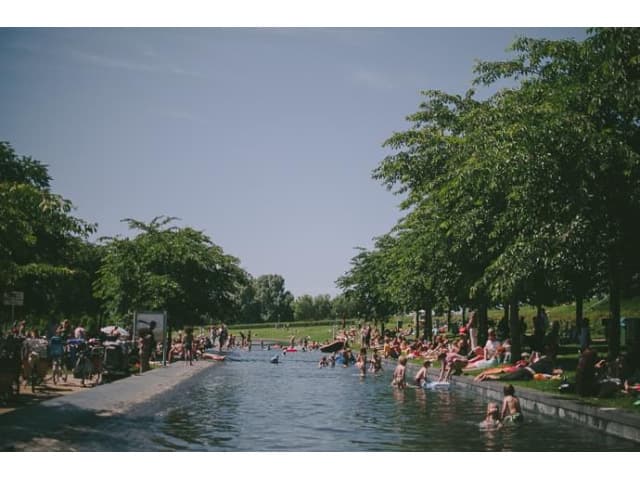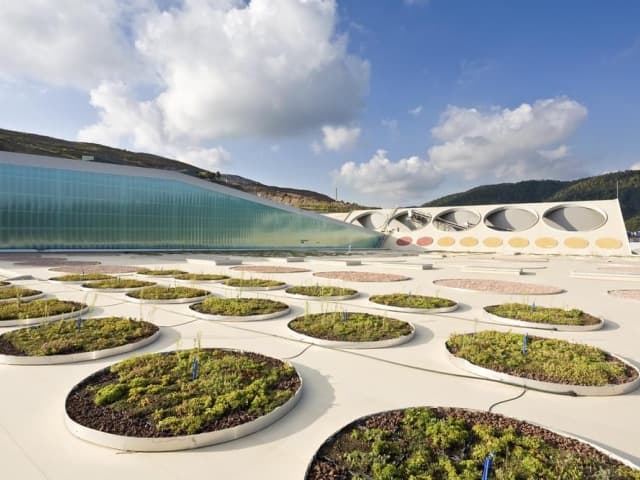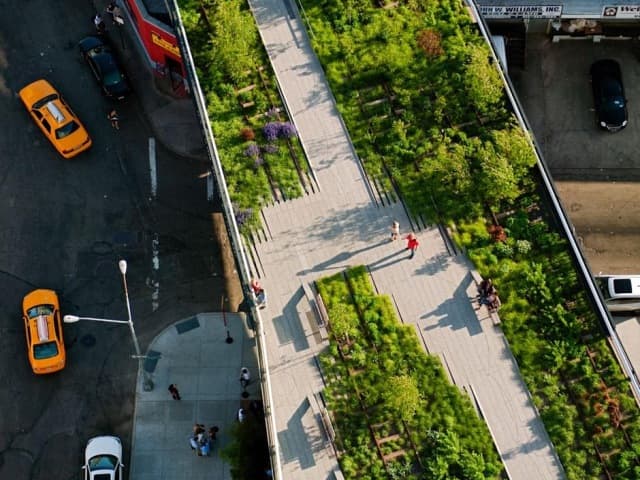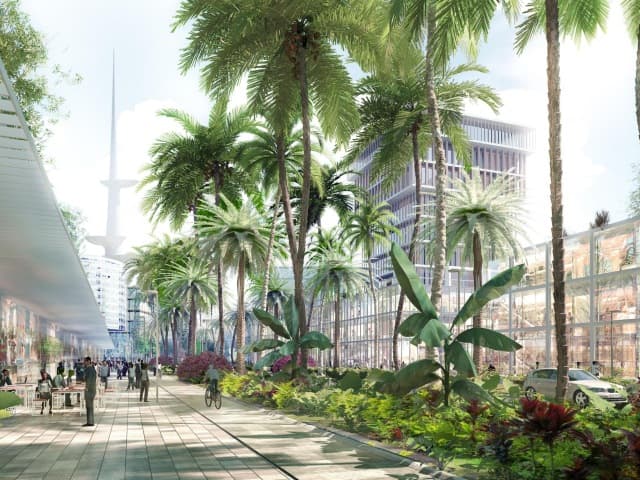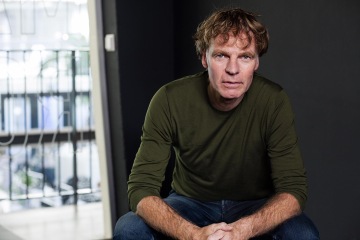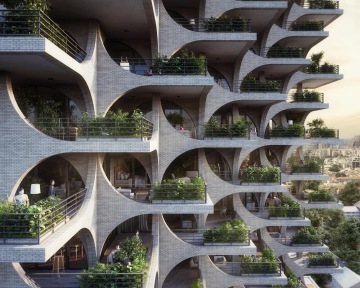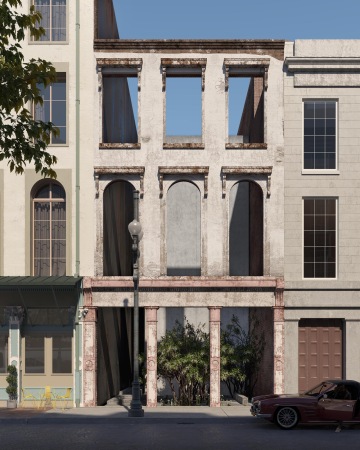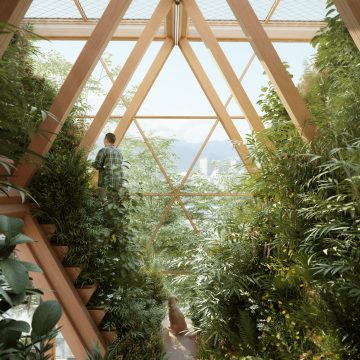
Ten Talks + Podcasts on Greening Our Cities for Earth Day
How can we harmonize our built environment with nature? These ten talks and podcasts from reSITE speakers and guests explore how our infrastructures, our urban landscapes, and our communities need not be in opposition with the natural world. Image courtesy of Studio Precht.
This Earth Day, we’d like to invite you to consider just how “staggering the environmental impacts of the built environment are” as described in a recent op-ed from Fast Company stating that it is estimated “the building industry holds nearly 40% of global climate emissions”. Resolving this issue entails more than just creating energy efficient spaces, but necessitates recognising and mitigating the damage caused by construction. Thus, we’ve rounded up some impactful talks and podcasts on bringing true sustainability, and what that actually means, to our built environment.
Enric Batlle on Building Biodiversity into Urban Infrastructure
We need to always merge public space, nature, and infrastructure to create a lovable and liveable city for our citizens.
Enric Batlle, architect and partner at Batlle i Roig, does not speak of infrastructure, but infrastructures. Using his native Barcelona, he illustrates how merging public space, nature, and production is crucial for lovable and liveable city. “Connectivity is an essential condition,” according to Batlle. Keeping the concept of biodiversity front and centre, he believes it is possible to merge public space and nature “anytime, anywhere”—even if that space is a landfill.
Kathryn Gustafson on The Art of Landscape Architecture
I look to art - what makes a painter paint a landscape and what is it about that landscape that is so beautiful, please turn back to art, what makes the human experience that is nourishing and beautiful.
Kathryn Gustafson, founding partner of Gustafson Porter + Bowman, seeks to channel art through landscape design as a reflection of the world around. In this talk she exhorts fellow architects to “turn back to art and learn from the art what makes the human experience something nourishing and beautiful.” From the Diana, Princess of Wales Memorial Fountain to the landscape design of the National Museum of African American History and Culture, Gustafson’s work appears as if it was always there—an integral part of the natural landscape.
Chris Precht on Connecting Architecture and Agriculture
I think cities need to be part of the food production of the future.
Chris Precht, founder of studio Precht, believes “we are a generation of strategic dreamers that asks what is possible and not necessarily what is profitable.” With our rapidly urbanising world, Precht posits that cities must be part of the food production of the future, going as far to suggest recentering the urban environment around it. If we don’t create buildings and spaces which inspire curiosity and reunite city-dwellers with nature, then our cities will lose their vitality. If you are curious to hear more from Chris, listen to him on our Design and the City podcast.
There Grows the Neighborhood with Emmanuel Pratt
Regeneration is an active process, not a passive process like sustainability, where people don’t know where to fit in.
“We’re calling for a paradigm shift,” says MacArthur Fellow and co-founder of the SweetWater Foundation, Emmanuel Pratt when discussing the deep-rooted inequalities of Chicago's western and southern neighborhoods in this talk. He practices what he calls “regenerative neighborhood development” that responds to the ecology of Chicago’s blighted spaces. With his team of dedicated, self-described “Solutionaries,” Pratt involves the community through education and hands-on projects to redraw the map of the South Side—transforming the “ecology of absence” into living, engaging places.
Sou Fujimoto on Reinventing the Relationship Between Nature & Architecture
The tree building becomes vertical life itself.
Sou Fujimoto, sees striking similarities between the seemingly opposing forces of nature and architecture. Drawing on the varying scales of a forest canopy, Fujimoto “layers the boundaries” of the structures he builds, as evidenced by his projects such as the Serpentine Gallery Pavilion, the Musashino Art University Library, and the Milles Arbres in Paris.
By creating differing levels of engagement between the structure and the surrounding landscape, just as there are unexpected clearings in a forest, he seeks to inspire curiosity and wonderment using real green space as the blueprint for his designs.
Martina Ableidinger on How Vienna Made Peace with its Waste
Waste is an aspect of the city's metabolism.
Vienna is continually ranked the most liveable city on Earth, renowned for its worldly, cosmopolitan splendour; however, it has embraced localism in a way often overlooked-- its waste. Martina Ableidinger, head of Waste Prevention & External Affairs at the Municipal Department of Vienna, demonstrates how managing waste locally mustn’t be limited to its disposal. In Ableidinger’s view, “Waste is an aspect of the metabolism of a city.” Under her stewardship, the primary waste management objectives in Vienna have been waste prevention, minimisation, and reuse. However, as she illustrates in her talk, even non recyclable waste can be repurposed to heat the homes and businesses of the Viennese--keeping waste local.
Yosuke Hayano on Architecture's Emotional Connection to Nature
We want to make a journey for people to meet nature in another way.
Forging emotional connections and relationships between people and nature by creating seamless, barrier-free architecture is MAD Architects principal, Yosuke Hayano’s, modus operandi. He says, “It’s quite important to think how our projects can trigger people’s feelings, their emotions towards our architecture.” Hayano does not seek accolades, nor does he wish for the structures he designs to be remembered—his aim is to build spaces which tap into our ancient collective memory and primeval desire to commune with the natural world. Listen to more from Yosuke Hayano on our Design and the City podcast.
More ideas on creating greener cities from reSITE's podcast, Design and the City
"Design and the City" is a podcast about the ways we can use design to make cities more livable and lovable.
The Architecture of Healing with Michael Green + Natalie Telewiak
Wherever we can choose to use something that's been grown by the power of the sun, leveraging the power of photosynthesis, we want to do that.
Vancouver-based architects, Michael Green and Natalie Teleiwak champion the idea that Earth can, and should, grow our buildings--or grow the materials we use to build them. They are the principals of Michael Green Architecture, or MGA, and have made it their mission to tackle world housing and climate change by harnessing the power of timber, which they call “the most technologically advanced material we can build with,” to sequester carbon, to accelerate construction and reduce local disruption, and to create spaces that foster a more holistic well-being in our built environments. Read along with our visual transcript.
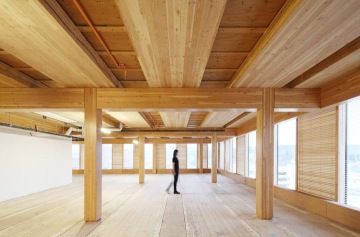
Winy Maas on Dipping the Planet in Green
I think it’s a pity that we don’t use our collective power to make the planet better.
Winy Maas’s, co-founder of MVRDV and founder of The Why Factory, ideas are seemingly larger than life, and pushing the boundaries of our urban potential. He asks, “how much water it costs, or how much it can store, how much 'Earth' it costs, and how much structure it costs, etc.” to maintain the planet. Through projects like the “Green Dip” that imagines what a “green city” might actually look like and the Tainan Market which features a rooftop garden where produce can be grown to be sold in the market below.
Maas imagines how a “green city” might actually look, such as the Tainan Market which features a rooftop garden where produce can be grown and sold in the market below. When discussing his work on controversial projects, such as the Gazprom Neft Headquarters, he explains with pragmatism that “it’s a pity that we don’t use our collective power to make the planet better” explaining that “sometimes you come into circumstances [in which] you can make a difference. I hope that our work can somehow do that.”
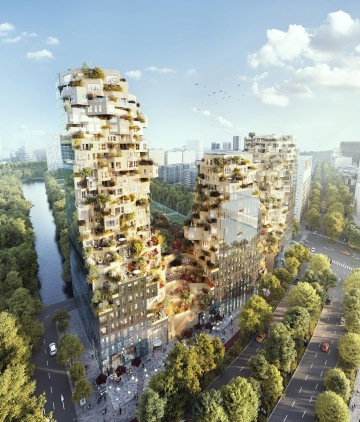
Trey Trahan on Creating Sacred Spaces for Connection
It doesn't mean at times some are going to privilege one form of life over other others, but I think we have to be respectful of all forms of life. I think there are deeply meaningful connections between buildings, architecture, and soil.
For Trey Trahan, founder of Trahan Architects views each of his projects as part of the natural ecosystem, including the soil. Soil is the repository for all living, organic matter, and for Trey, our buildings should not be separate from it, but constructed in harmony. He said “I once read that it takes 1000 years to build three centimetres of topsoil. And so there's this precious layer that we build on, we almost encapsulate it recklessly in my opinion." He argues of its sacredness to it, because embodied in it is life. He makes the case that technology can contribute significantly to biodiversity fighting climate change. Read along on on this episode's published transcript.
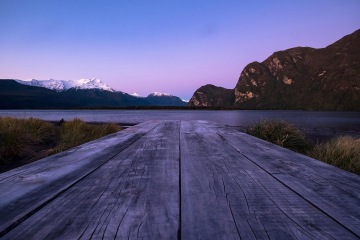
Support your local planet. Happy Earth Day!
Watch more talks on urban landscapes from reSITE
Landscape is Everything Around You with Kathryn Gustafson
Kathryn Gustafson is a landscape architect and co-founded the landscape architecture firm Gustafson Porter + Bowman, based in London. Gustafson’s projects include Gardens of the Imagination in Terrasson, France, Westergasfabriek in Amsterdam, Diana, Princess of Wales Memorial Fountain in London.
How to Create Biodiverse Cities with Enric Batlle | reSITE City Talks
Enric Battle, architect and partner at Battle i Roig discusses the integration of biodiversity and infrastructure in urban spaces by looking to biodiversity, connectivity, and productivity to shape urban green spaces.
Designing the New York High Line as a Shared Landscape with James Corner
James Corner, Founder of James Corner Field Operations, talks the future of landscape architecture beyond parks and waterfronts. He begs the question of how to consider the natural environment at the scale of the urban, and in the interests of ‘green’ urban public spaces, how to cater to the interests of diverse public bodies.
Hiroki Matsuura on Prioritizing People in the Shared Landscape
Landscape architect and MADMA CEO Hiroki Matsuura discusses connecting green spaces in urban planning to make areas more livable and enjoyable for people. He uses three examples of his work in different settings to show how he transforms a shared space to be both functional and beautiful.
Listen to more from Design and the City
The Architecture of Healing with Michael Green + Natalie Telewiak
Michael Green and Natalie Telewiak love wood. These Vancouver-based architects champion the idea that Earth can, and should, grow our buildings--or grow the materials we use to build them on this episode of Design and the City. Photo courtesy of Ema Peter
Winy Maas on Dipping Our Planet in Green
Design and the City is back with the first episode of our second season featuring co-founder of MVRDV, Winy Maas, in conversation with Martin Barry on greening our cities, his latest projects, and how constructive criticism leads to productivity. Listen now!
A New Generation of Architects with Chris Precht
Chris Precht’s aim to reconnect our lives to our food production by bringing it back into our cities and our minds can be found throughout his architecture. Listen as he discusses the importance of authenticity, creating spaces that activate our senses, and looking at our objective reality to solve the problems of our time.
Trey Trahan on Building Sacred Spaces for Connection
This episode of Design and the City features the founder of Trahan Architects, Trey Trahan on the importance of creating sacred spaces devoid of clutter that make way for that human connection, his definition of beauty, and the potential regeneration holds, presenting a different side of that coin.
